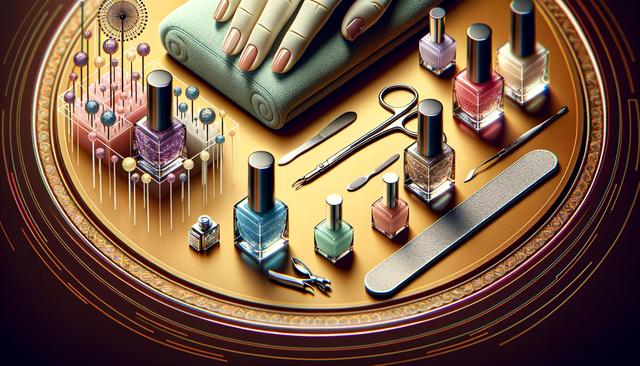Understanding the Basics of Nail Technology
Nail technology is much more than painting nails. It’s a detailed practice that blends hygiene, art, and personal care. The foundation of nail tech skills starts with knowing how to properly file, buff, and shape nails. These steps not only improve appearance but also maintain nail health. Learning the right techniques ensures that nails are prepped for longer-lasting polish and designs. Understanding nail anatomy is also crucial. It helps you avoid injuries and provide better service to clients or yourself.
Some essential tools every beginner should be familiar with include:
- Nail files and buffers
- Cuticle pushers and cutters
- Base coat, polish, and top coat
- Nail clippers and scissors
- Sanitizing solutions
Before diving into complex designs, it’s important to perfect the basics. Focusing on cleanliness, shaping, and even polish application sets the stage for more advanced techniques later on.
Building Your Skill Set Through Practice
Once you’re comfortable with the basics, consistent practice is the key to improvement. Whether you’re self-taught through online tutorials or enrolled in a course, hands-on experience helps refine your techniques. Start by practicing on yourself or a practice hand. This allows you to test various tools and methods without pressure.
As your skills grow, try:
- Different nail shapes like almond, stiletto, or square
- Layering polish for durability and shine
- Experimenting with gel and acrylic applications
Keep a nail journal to track your progress. Include photos of your work, note what techniques you used, and highlight areas where you can improve. Practice not only builds muscle memory but also boosts your confidence in trying new styles and ideas.
Exploring Nail Art and Creative Design
One of the most exciting parts of learning nail tech skills is exploring nail art. This is where creativity really takes off. From simple polka dots to detailed floral designs, nail art lets you express personal style or follow trending looks. Techniques such as stamping, freehand drawing, and using nail accessories like gems and stickers can elevate your skills.
Popular nail art tools and materials include:
- Detail brushes
- Dotting tools
- Nail stickers and foil
- Sponges for ombre effects
Don’t be afraid to experiment. Even if a design doesn’t turn out as expected, it’s still a learning opportunity. You can also find inspiration through social media platforms or by following nail art blogs. These sources offer tutorials and ideas that keep your practice fresh and exciting.
Hygiene, Safety, and Client Care
In nail technology, hygiene and safety are just as important as artistic skill. Whether working on yourself or clients, always clean and sanitize your tools before and after use. Proper sanitation helps prevent infections and ensures client trust. It’s also essential to learn how to recognize common nail conditions and when to refer someone to a medical professional rather than providing a service.
Some basic hygiene practices include:
- Washing hands before and after sessions
- Disinfecting all tools and surfaces
- Wearing gloves when needed
- Using disposable items when appropriate
Building good client relationships also means listening carefully and providing services that match their preferences and needs. Being professional, punctual, and respectful goes a long way in creating a positive experience.
Turning Skills into a Business or Career
As your skills and confidence grow, you might consider turning your nail tech passion into a source of income. You can start small by offering services to friends and family or working part-time at a salon. Eventually, you might choose to pursue certification and open your own business. Many regions require a license to work professionally, so be sure to check local regulations.
Paths to explore include:
- Freelance nail technician services
- Salon or spa employment
- Mobile nail services
- Teaching or creating tutorials online
Marketing your services is key. Use social media to share your work and gain visibility. Offering promotions or referral discounts can also help attract new clients. While building a career takes time, dedication and continuous learning will support your growth in the nail tech field.
Conclusion: Why Learning Nail Tech Skills is Worth It
Learning nail tech skills opens the door to both personal creativity and professional opportunity. Whether you pursue it as a hobby or a career path, the process of mastering different techniques can be both rewarding and enjoyable. With patience, practice, and a commitment to hygiene and quality, you can develop talents that bring joy to yourself and others. It’s a craft that blends beauty, care, and expression—well worth exploring for anyone interested in hands-on artistry.


